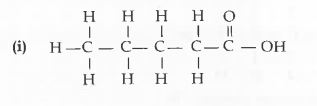ಈ ಕೆಳಗಿನವುಗಳಿಗೆ ಸರಿದೂಗಿಸಿದ ರಾಸಾಯನಿಕ ಸಮೀಕರಣ ಬರೆಯಿರಿ ಮತ್ತು ಪ್ರತಿಯೊಂದು ಕ್ರಿಯೆಯ ವಿಧವನ್ನು ಗುರುತಿಸಿ. ಹೈಡ್ರೋಜನ್(g) + ಕ್ಲೋರಿನ್(g) → ಹೈಡ್ರೋಜನ್ ಕ್ಲೋರೈಡ್(g) + ಹೈಡ್ರೋಜನ್(g)
Step by step video & image solution for ಈ ಕೆಳಗಿನವುಗಳಿಗೆ ಸರಿದೂಗಿಸಿದ ರಾಸಾಯನಿಕ ಸಮೀಕರಣ ಬರೆಯಿರಿ ಮತ್ತು ಪ್ರತಿಯೊಂದು ಕ್ರಿಯೆಯ ವಿಧವನ್ನು ಗುರುತಿಸಿ. ಹೈಡ್ರೋಜನ್(g) + ಕ್ಲೋರಿನ್(g) → ಹೈಡ್ರೋಜನ್ ಕ್ಲೋರೈಡ್(g) + ಹೈಡ್ರೋಜನ್(g) by Chemistry experts to help you in doubts & scoring excellent marks in Class 10 exams.
Updated on:21/07/2023Topper's Solved these Questions
Similar Questions
ಈ ಕೆಳಗಿನ ಸಂಯುಕ್ತಗಳ ಹೆಸರನ್ನು ಬರೆಯಿರಿ.

View Solutionನೀಡಿರುವ ರಾಸಾಯನಿಕ ಸಮೀಕರಣಗಳನ್ನು ಗಮನಿಸಿ. ಸರಿಯಾದ ಹೇಳಿಕೆಯನ್ನು ಗುರುತಿಸಿ. (CuSO4+Fe→FeSO4+Cu)
View SolutionIf g(x)=∫0xcos4tdt , then g(x+π) equals: (1) (g(x)g(π) (2) g(x)+g(π) (3) g(x)−g(π) (4) g(x).g(π)
View SolutionIf g(x)=∫x0cos4tdt, then g(x+π) equals (a)g(x)+g(π) (b) g(x)−g(π) (c)g(x)g(π) (d) g(x)g(π)
View SolutionFor the reaction. H_(2)(g) +2ICI(g) rarr 2HCl(g) +I_(2)(g) one proposed mechanism is H_(2)(g) +ICI(g) rarr HICI(g) +H(g)" " (fast) H(g) +ICl(g)rarr HCl(g) +I(g) " " (fast) HICl(g) rarr HCl(g) +I(g)" " (fast) I(g) +I(g) rarr I_(2)(g)" " (fast) Intermediates in this reaction include which of the following?
View SolutionFor the reactions. N2(g)+3H2(g)⇔2NH3(g),N2(g)+O2⇔2NO(g) & H2(g)+12O2(g)⇔H2O(g) if the equilibrium constant are K1,K2 and K3 respectively, then the equilibrium constant for the reaction 4NH3(g)+5O2(g)⇔4NO(g)+6H2O(g) is
View Solutionನಿಮ್ಮಲ್ಲಿ ‘ಎ’ ಮತ್ತು ‘ಬಿ’ ಎಂಬ ಎರಡು ದ್ರಾವಣಗಳಿವೆ. ದ್ರಾವಣ ಎ’ ಯ pH– 6 ಮತ್ತು ದ್ರಾವಣ ‘ಬಿ’ ಯ pH – 8. ಯಾವ ದ್ರಾವಣದಲ್ಲಿ ಹೈಡ್ರೋಜನ್ ಅಯಾನುಗಳ ಸಾರತೆ ಹೆಚ್ಚಿದೆ? ಇವುಗಳಲ್ಲಿ ಯಾವುದು ಆಮ್ಲ ಮತ್ತು ಯಾವುದು ಪ್ರತ್ಯಾಮ್ಲ?
View SolutionIf g(x)=∫x0cos4tdt, then g(x+π) equals (a)g(x)+g(π) (b) g(x)−g(π) (c)g(x)g(π) (d) g(x)g(π)
View SolutionIf g(x)=∫0xcos4tdt , then g(x+π) equals: (1) g(x)g(π) (2) g(x)+g(π) (3) g(x)−g(π) (4) g(x).g(π)
View SolutionIf K1 and K2 are the respective equilibrium constants for the two reactions
(i) XeF6(g)+H2O(g)⇔XeOF4(g)+2HF(g)
(ii) XeO4(g)+XeF6(g)⇔XeOF4(g)+XeO3F2(g)
The equilibrium constant for the reaction XeO4(g)+2HF(g)⇔XeO3F2(g)+H2O(g) will be
View SolutionGiven :
N2(g)+3H2(g)⇔2NH3(g),K1
N2(g)+O2(g)⇔2NO(g),K2
H2(g)+12O2(g)⇔H2O(g),K3
The equilibrium constant for,
2NH3(g)+52O2(g)⇔2NO(g)+3H2O(g) will be :
View SolutionHow many of the following reactions proceed with the absorption of energy? Cl(g) to CI^(-)(g) O^(2-) (g) to O^(-)(g) N(g) to N^(-)(g) Mg(g) to Mg^(2+)(g) Cl^(-)(g) to Cl^(2-)(g) Be(g) to Be^(-)(g)
View SolutionHow many of the following reactions proceed with the absorption of energy? Cl(g) to CI^(-)(g) O^(2-) (g) to O^(-)(g) N(g) to N^(-)(g) Mg(g) to Mg^(2+)(g) Cl^(-)(g) to Cl^(2-)(g) Be(g) to Be^(-)(g)
View SolutionHow many of the following reactions proceed with the absorption of energy? Cl(g) to CI^(-)(g) O^(2-) (g) to O^(-)(g) N(g) to N^(-)(g) Mg(g) to Mg^(2+)(g) Cl^(-)(g) to Cl^(2-)(g) Be(g) to Be^(-)(g)
View Solutionರಚನಾರೂಪಿ ಅಂಗಗಳು ಮತ್ತು ಕಾರ್ಯಾನುರೂಪಿ ಅಂಗಗಳಿರುವ ವ್ಯತ್ಯಾಸಗಳನ್ನು ಬರೆಯಿರಿ.
View Solutionಪುರುಷನ ಲಿಂಗವರ್ಣತಂತುಗಳು ಮತ್ತು ಮಹಿಳೆಯ ಲಿಂಗವರ್ಣತಂತುಗಳಿಗಿರುವ ವ್ಯತ್ಯಾಸಗಳನ್ನು ಬರೆಯಿರಿ.
View Solution
